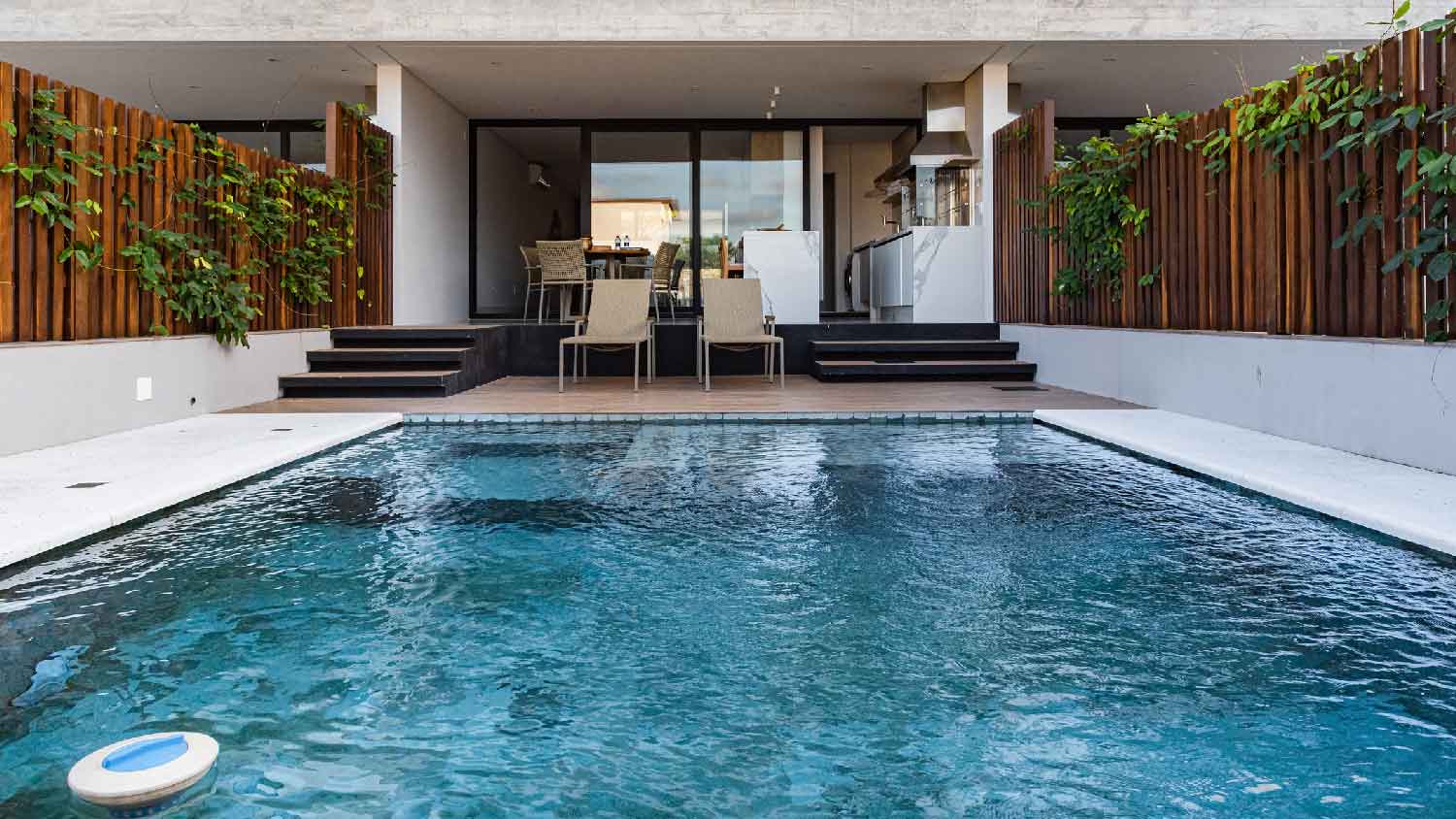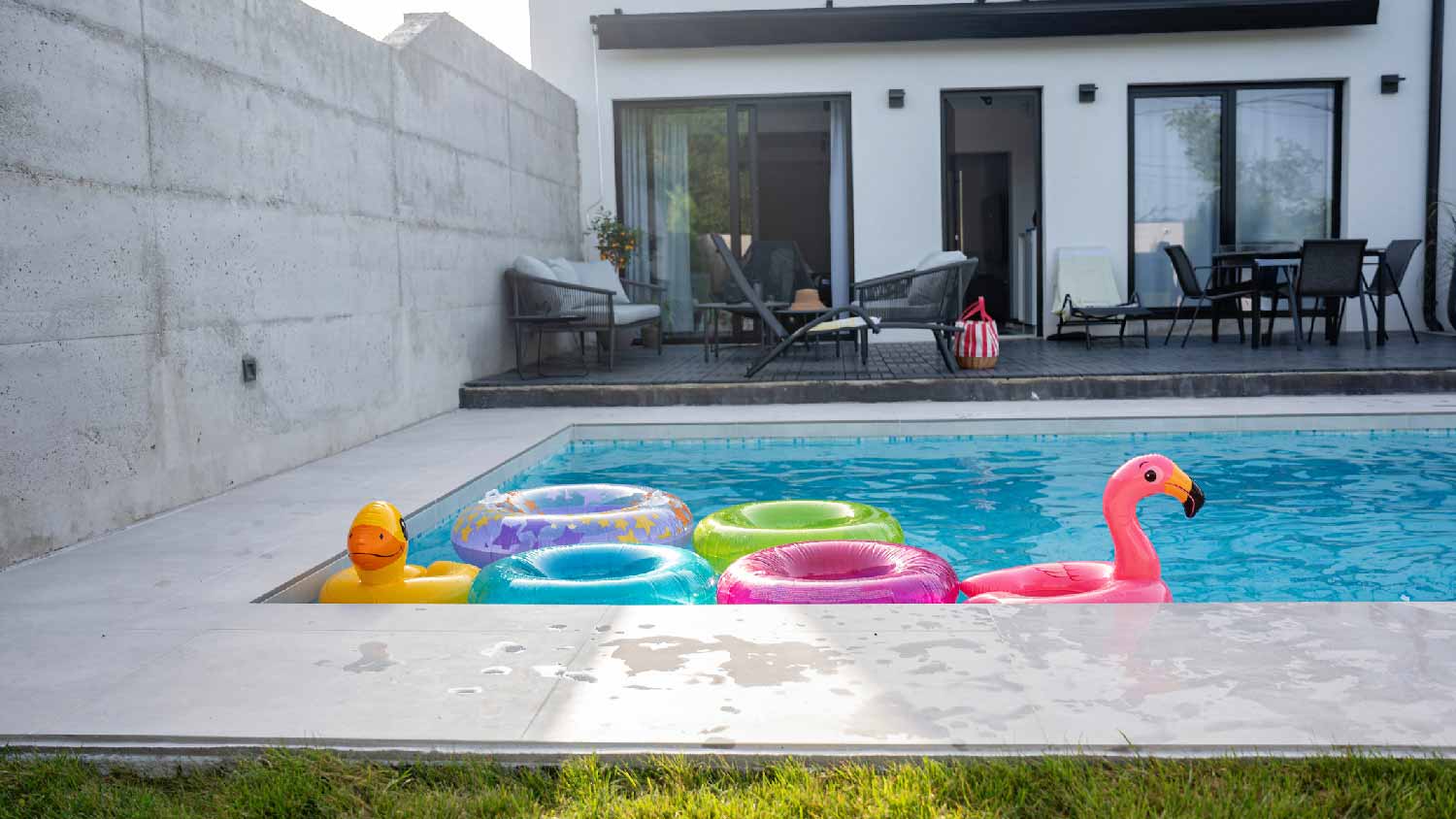
Wondering about hot tub cover costs? Learn what impacts pricing, compare materials, and discover ways to save on your next hot tub cover purchase.
Fill your backyard oasis to get jets and bubbles flowing


The final step to jet-powered bliss is the filling. It’s not difficult, but following a few simple steps can ease the process and ensure you don’t end up with an air-locked system. Grab your garden hose, and keep reading to get your hot tub relax-ready.
First, before putting a drop of water in your hot tub, ensure it’s in its permanent resting spot. Your hot tub isn’t going anywhere once filled. If you need to move it later, you’ll have to drain and refill it. Second, do not fill your hot tub unless you, if you have electrical experience or a pool electrician, have correctly connected the electrical system to a dedicated breaker.
Turn off the breaker to the hot tub. You don’t want to accidentally turn on the pump or heater and burn them up by running them dry. Turning off the electricity also eliminates the danger of shocks or electrocution. You won’t touch the power again until the hot tub is filled and ready to prime.
Using a screwdriver, remove the front cabinet that covers the control panel. The control panel houses the pump, heater, and sometimes key filtration system components. Check all the connections and couplings, especially those around the pump, to ensure they’re tight and secure.
Sometimes, these connections and fittings come loose during transport or when an electrician connects the hot tub. You can leave the front cabinet off while filling the tub, but put it back on if it takes more than a day. You don’t want animals or debris to get inside.
Attach the prefilter to the garden hose. The prefilter removes suspended solids to start conditioning the water. A prefilter alone won’t fully prepare the water for use, but it prevents hard water from entering your hot tub’s system.
Take out the hot tub filter that’s closest to the control panel. Keep in mind that not all hot tub designs are the same. Your filter may not be right next to the control panel. But choose one that’s near the pump and remove the filter. Put the filter at the bottom of the hot tub, where it can absorb water during the filling process. A wet filter starts working faster than a dry one.

Place the prefilter end of the garden hose end into the filter fitting. The water will enter the system through this fitting, though the prefilter doesn’t attach to the fitting. Make sure nothing else falls into the fitting while you’re filling. If something like a leaf or stick gets into the system, it can jam up the system before you even get a chance to enter the water.
Turn on the water. Check that the hose is still in place. Water pressure can sometimes displace the hose. You might need to adjust the water pressure at this point. If the water is sputtering, adjust the flow until it’s smooth. A smooth, consistent flow can prevent air from entering the system, causing an air lock.
Once the footwell is filled, pour the sequestering agent into the water as the hot tub fills. This agent further neutralizes suspended solids in the water. Read the instructions on the bottle to know how much to add. The sequestering agent should be the only chemical you add to the hot tub until after the water has fully cycled through the system after the priming cycle. After the priming cycle, you can adjust the chemical balance as indicated by the hot tub manufacturer's instructions.
Continue to fill the hot tub until the water reaches the minimum water level indicated by the water fill line on the outside of the hot tub. The water level can go above this line and rise when people enter the water. But the water level should always stay above this line. Too little water can let air into the system, which can cause air lock.
Once the water reaches the fill line, turn off the water and remove the hose from the hot tub. Take the filter out of the bottom of the hot tub and put it back in the fitting.

If your hot tub has a bleeder valve, loosen it until you hear air hissing. Leave it open until the hissing stops and water comes out. Close the valve. You don’t want to leave this valve open, as water will continue to come out.
Turn the breaker back on, and turn on the priming cycle. The priming cycle prepares the pump(s) and can take up to 40 minutes to complete. While the system is priming, check the connections, couplings, and fittings around the pump and heater one last time.
Before replacing the front cabinet, make sure no debris or animals got into the control panel. After the water has cycled through once, you can add additional chemicals to treat and balance the water. You’ll still need to wait until the water reaches temperature, but you’re not far from enjoying your hot tub.
Filling a hot tub doesn’t usually require a pro unless you’re short on time. In this case, you might be able to hire a local hot tub installer to fill it for you. You’re more likely to need a pro to connect the electrical system. While not all hot tubs require a dedicated breaker, in-ground hot tubs and large above-ground models with a heater and multiple pumps most definitely will. A local electrician can ensure everything is up to code and safely connected so you can soak up the hot tub’s benefits.
From average costs to expert advice, get all the answers you need to get your job done.

Wondering about hot tub cover costs? Learn what impacts pricing, compare materials, and discover ways to save on your next hot tub cover purchase.

Discover the average hot tub maintenance cost, what impacts pricing, and how to save money. Get expert tips to keep your hot tub running smoothly all year.

Discover how much a saltwater hot tub costs on average, including installation and ongoing expenses, plus tips to save money and compare DIY vs. pro options.

When you go for a dip in your pool, it should be refreshing, not slimy. Get answers to "why is my pool slimy" and find out how to fix it.

Why is there sand in my pool? Often, it’s due to a broken sand filter, but there are other common causes as well. Here’s how to identify and fix the problem.

Saltwater hot tubs are a great alternative to traditional options. Discover the pros and cons of saltwater hot tubs to see if one is right for you.